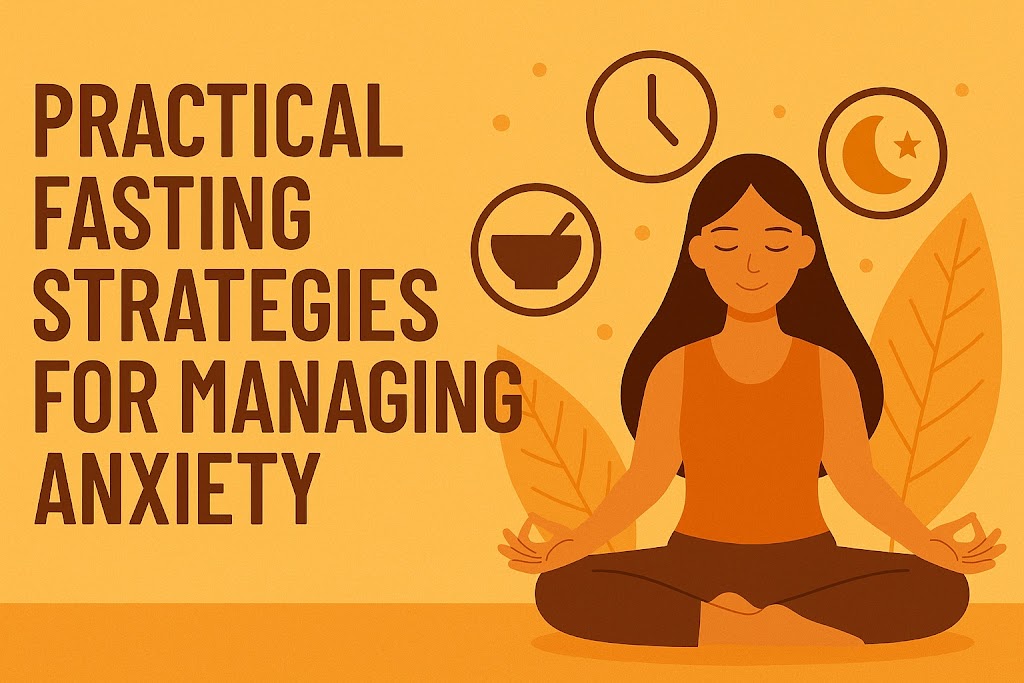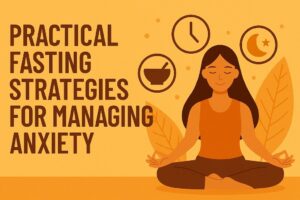Fasting Styles for Anxiety: What Works Best (and What to Avoid)
If you’ve ever felt calm, focused, or even euphoric during a fast—you’re not alone. But if you’ve also felt anxious, jittery, or unable to sleep—you’re not alone either.
This post breaks down how different fasting styles can either help reduce anxiety or make it worse. We’ll cover what the research says, who each style works best for, and practical tips to make fasting part of your mental wellness toolkit.
1. 12:12 – Gentle and Sustainable
Eat: 12-hour window (e.g., 8 AM to 8 PM)
Fast: 12 hours overnight
This style mimics the natural overnight fast. It’s easy on hormones and doesn’t require major shifts in routine.
Best for: Beginners, women with hormone sensitivity, anyone with adrenal fatigue or anxiety flare-ups during long fasts.
Why it works: Supports circadian rhythm, allows digestive reset, minimizes cortisol response.
2. 14:10 – A Slight Push Toward Fat Adaptation
Eat: 10-hour window (e.g., 10 AM to 8 PM)
Fast: 14 hours
This is often the sweet spot for people with mild anxiety. It gives a break from insulin spikes while still being gentle on the nervous system.
Study: A 2022 study in Nutrition Reviews found that moderate intermittent fasting improved mood and energy without raising cortisol. (PubMed ID: 36170161)
3. 16:8 – The Gold Standard for Mood & Metabolic Flexibility
Eat: 8-hour window (e.g., 12 PM to 8 PM)
Fast: 16 hours
This popular method enhances fat-burning and ketone production, which can benefit brain chemistry and energy stability.
Best for: People with stable blood sugar and moderate fasting experience.
Watch out for: Too much coffee on an empty stomach or stress from over-restriction.
Organic Decaf Coffee is a gentler choice for anxious fasters.
4. 18:6 or 20:4 – Use with Caution for Anxiety
Eat: 6-hour or 4-hour window
Fast: 18–20 hours
These are more advanced protocols that ramp up autophagy and fat-burning. They may offer mental clarity for some—but overstimulate others.
When it may help: For short durations (e.g., 1–2 times/week) if anxiety is well managed.
When to avoid: If sleep quality, energy, or mood drop significantly.
5. OMAD (One Meal a Day) – Risky for Anxiety-Prone Individuals
Eat: All food in 1 hour
Fast: 23 hours
OMAD can lead to under-eating, blood sugar crashes, or overstimulation from cortisol.
Not ideal for: People with panic disorder, HPA axis dysfunction, perimenopause, or chronic anxiety.
Tips to Reduce Anxiety While Fasting
- Stay hydrated with zero-sugar electrolytes
- Avoid caffeine past noon
- Break your fast with protein and healthy fats, not sugar
- Use calming support like L-Theanine or Magnesium Glycinate
Final Thoughts
The best fasting style for anxiety is the one that works with your body—not against it. Start with gentle protocols, track your mood, and scale slowly. Fasting can become a powerful mental health ally when done with care, consistency, and self-awareness.
Next in this series: “Real Fixes for Anxiety During a Fast: Tools That Actually Work”
Disclaimer: This post is for informational purposes only and is not medical advice. Always consult your healthcare provider before beginning a fasting protocol, especially if you have a history of anxiety disorders or medication use. This post may contain affiliate links. As an Amazon Associate, I earn from qualifying purchases.


